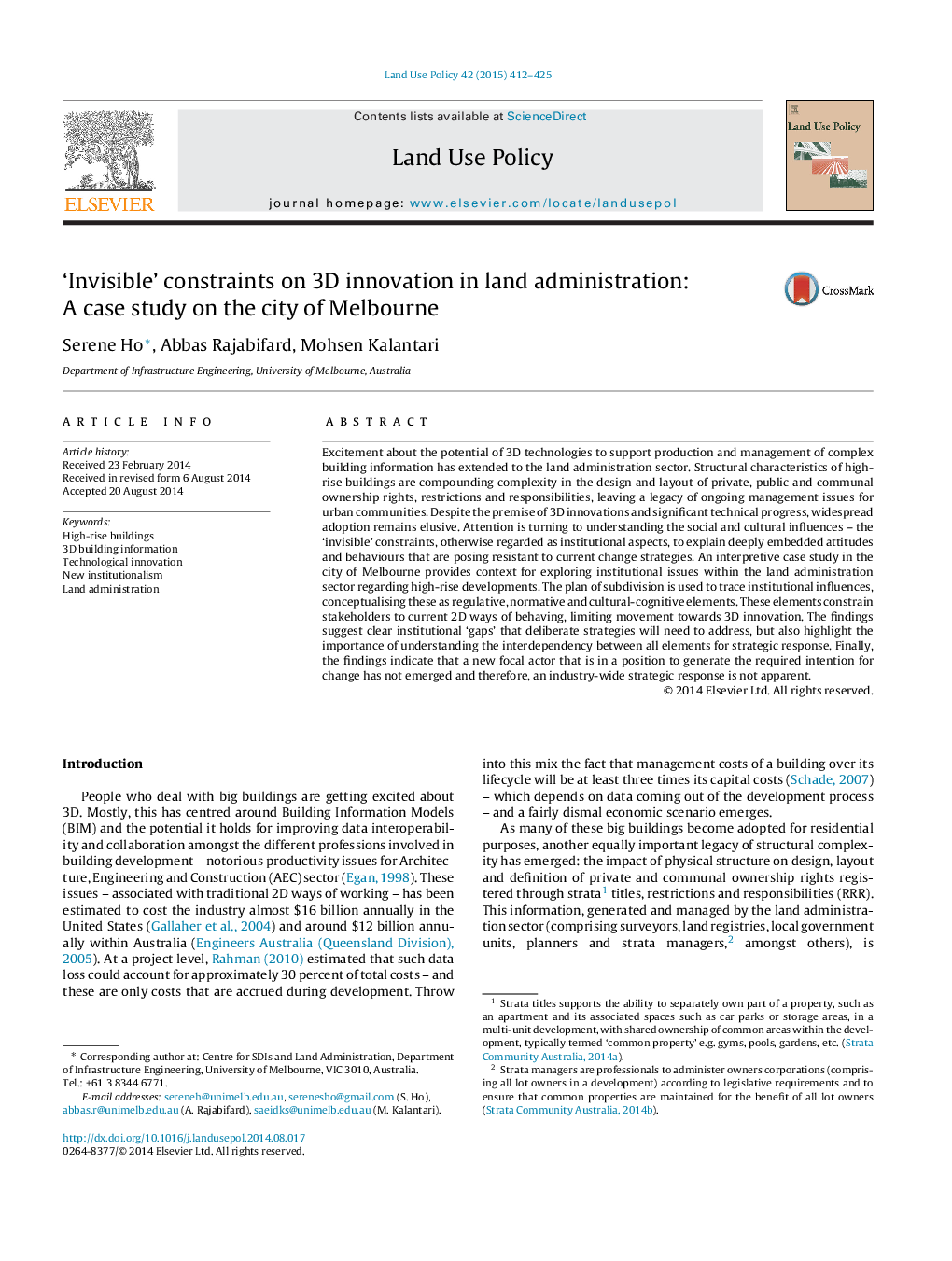ترجمه فارسی عنوان مقاله
محدودیت های نامرئی بر نوآوری 3D در مدیریت زمین: مطالعه موردی در شهر ملبورن
عنوان انگلیسی
‘Invisible’ constraints on 3D innovation in land administration: A case study on the city of Melbourne
| کد مقاله | سال انتشار | تعداد صفحات مقاله انگلیسی |
|---|---|---|
| 65476 | 2015 | 14 صفحه PDF |
منبع

Publisher : Elsevier - Science Direct (الزویر - ساینس دایرکت)
Journal : Land Use Policy, Volume 42, January 2015, Pages 412–425
ترجمه کلمات کلیدی
ساختمان های بلند؛ اطلاعات ساختمان 3D - نوآوری در فن آوری؛ نهادگرایی جدید - مدیریت زمین
کلمات کلیدی انگلیسی
High-rise buildings; 3D building information; Technological innovation; New institutionalism; Land administration

